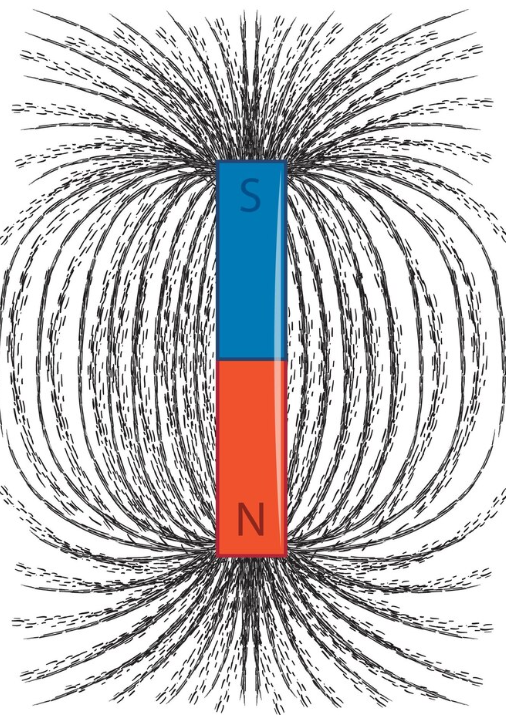Unit 4 Overview: Magnetic Fields
Magnetic fields are a cornerstone of physics, describing the behavior of magnets and their interactions with charged particles. Unit 4 provides a deep dive into the principles, applications, and laws governing magnetic fields, equipping learners with the foundational knowledge required to explore electromagnetism and its real-world applications.

Overview
This unit covers the behavior and properties of magnetic fields, the forces they exert on charged particles, and their applications in various technologies. Key topics include:
Magnetic Fields and Magnetic Force: Understanding the interaction of magnetic fields with charged particles.
Applications of Magnetic Fields: Exploring practical uses in particle accelerators, MRI machines, and electric motors.
Electromagnetic Waves and Fields: Examining the relationship between magnetic and electric fields.
Magnetism and Matter: Investigating how magnetic materials respond to external magnetic fields.
By mastering these concepts, learners gain a comprehensive understanding of magnetic fields and their role in modern science and technology.
4.1 Forces on Moving Charges in Magnetic Fields
When a charged particle moves through a magnetic field, it experiences a force given by:
Where:
: Magnetic force (N)
: Charge of the particle (C)
: Velocity of the particle (m/s)
: Magnetic field (T)
Right-Hand Rule
To determine the direction of the magnetic force:
Point your thumb in the direction of the particle’s velocity.
Point your fingers in the direction of the magnetic field.
The force is perpendicular to both and is represented by your palm’s push direction.
Properties of Magnetic Force
The force is proportional to the charge, velocity, and magnetic field strength.
It does no work on the particle since it is perpendicular to the particle’s motion.
The particle’s path becomes curved (cyclotron motion), with the radius of curvature given by:
Where is the particle’s mass.
4.2 Forces on Current-Carrying Wires in Magnetic Fields
A current-carrying wire in a magnetic field experiences a force due to the interaction of the field with moving charges in the wire. The force is:
Where:
: Force on the wire (N)
: Current (A)
: Length of the wire in the field (m)
: Magnetic field strength (T)
: Angle between the current and the magnetic field.
Right-Hand Rule for Wires
Point your thumb in the direction of the current.
Point your fingers in the direction of the magnetic field.
The force is perpendicular to both and directed along your palm.
Applications
Electric Motors: Magnetic forces create rotational motion.
Hall Effect Sensors: Measure magnetic field strength by detecting forces on electrons.
Generators: Convert mechanical energy into electrical energy using magnetic forces.
4.3 Fields of Long Current-Carrying Wires
A long, straight wire carrying current generates a circular magnetic field around it. This magnetic field’s strength is given by Ampere’s Law:
Where:
: Magnetic field strength (T)
: Permeability of free space ( N/A)
: Current (A)
: Distance from the wire (m)
Right-Hand Rule for Magnetic Fields
Point your thumb in the direction of the current.
Curl your fingers around the wire.
Your fingers indicate the direction of the magnetic field.
Applications
Electromagnets: Strong magnetic fields created by coiling wires.
Solenoids: Generate uniform magnetic fields for use in devices like MRI machines.
4.4 Biot-Savart Law and Ampere’s Law
Biot-Savart Law
The Biot-Savart Law calculates the magnetic field at a point due to a current element:
Where:
: Length of the current element (m)
: Angle between the current element and the point of measurement.
Ampere’s Law
Ampere’s Law relates the magnetic field around a closed loop to the current passing through it:
Applications
Solenoids: Ampere’s Law calculates the field inside a solenoid:
Where is the number of turns per unit length.
Complex Systems: Biot-Savart Law applies to non-uniform magnetic fields.
Magnetism and Matter
Magnetic materials respond differently to external fields, classified as:
Diamagnetic: Weakly repel magnetic fields.
Paramagnetic: Weakly attract magnetic fields.
Ferromagnetic: Strongly attract magnetic fields due to aligned magnetic domains.
Magnetization
Magnetization measures the magnetic moment per unit volume, influencing the material’s response to external fields.
Applications
Hard Drives: Use ferromagnetic materials to store data.
Magnetic Shields: Protect sensitive equipment from external magnetic fields.
Key Takeaways
Magnetic fields interact with charges and currents to produce forces.
Applications of magnetic fields span electric motors, generators, sensors, and medical imaging.
Laws such as Biot-Savart and Ampere’s Law are critical for calculating magnetic fields in various scenarios.
Understanding magnetism in materials is essential for designing advanced technologies.







